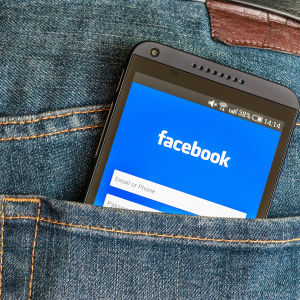Network neutrality, the most significant piece of internet regulation championed by the Obama administration, might be yet another casualty of the coming Donald Trump presidency. That wouldn’t be a bad thing.
Though President Barack Obama expressed support for the rule during his 2008 campaign, debate about net neutrality remained largely contained within the policy sphere until Federal Communications Commission Chairman Tom Wheeler began rulemaking in 2014. That effort attracted support not only from industry leaders like Google and Facebook, but even from pop culture figures like HBO’s John Oliver, whose monologue on the subject helped drive a record 3.7 million submissions during the FCC’s public comment period.
The FCC voted 3-2 in favor of the regulation in February 2015, in concert with a decision to reclassify internet service providers (ISPs) as regulated utilities under the Telecom Act of 1996, declaring them akin to the landline phone companies of the 20th century. While not an executive order, it was another example of the executive branch bypassing Congress to create new regulation—controversial because some constitutional scholars believe only Congress has the authority to impose so radical a revision to the Telecom Act.
Not all network neutrality is contentious. Everyone agrees that ISPs should allow users to access all legal websites and use the device of their choice. The crux of the dispute centers on whether ISPs could treat traffic differently as it crossed their networks, such as partitioning bandwidth for video-streaming services or employing network management tools to ensure better error correction. This extends to pricing as well. Under network neutrality, Verizon or AT&T could not charge Netflix or YouTube a higher price for their use of network resources, even though those services exact a cost in terms of capacity and management.
It is ironic, then, that “zero rating” became the first test of network neutrality. Zero rating, or toll-free data, is the ISP practice of exempting certain services from consumer data caps. For example, your monthly wireless data plan may include 20 gigabytes of data, but you will incur added charges if you go over that limit. Application providers sometimes strike zero-rating agreements with service providers not to have their data counted against those limits. T-Mobile’s Binge On is an example.
Facebook’s zero-rating plan ran afoul of regulators in India, who considered it a net neutrality violation. In the United States, groups such as the Electronic Frontier Foundation, Free Press and the Center for Media Justice have complained that such arrangements also violate the FCC rule. They do have a point. Network neutrality was envisioned as supply-side regulation, to prevent ISPs from putting some providers at a disadvantage by charging more to reach their customers. Zero rating is a demand-side pricing practice that, in critics’ view, fosters the same outcome, granting some providers an advantage because customers have no pocketbook limits on their use.
But what’s undeniable is that zero rating is a boon for consumers. At the end of the day, it gives them more data for the buck and helps close the digital divide. By contrast, the Indian government’s ruling against Facebook has deprived some 19 million Indians of affordable internet access.
This may be why the FCC until recently has been quiet about zero rating, even as AT&T and Verizon adopted the practice. This changed the day after Election Day, when the agency cautioned AT&T that including DirecTV video streaming in its zero-rating package might be unfair. Though left unsaid, the warning has implications for AT&T’s pending deal to acquire media and content giant Time Warner.
Along with illustrating net neutrality’s unintended consequences, the FCC’s inconsistency on zero rating also validates the criticism net-neutrality opponents have voiced from the start – that it hogties the rapidly moving information technology sector into a “mother, may I?” regulatory regime. When AT&T and Netflix agree on zero rating, it’s OK. But should AT&T include HBO, acquired via Time Warner, then it’s not OK. Will the FCC permit zero rating for T-Mobile, which has 17 percent market share, but prohibit it for Verizon, which has 35 percent? We don’t know. That’s the problem. Ad hoc rulemaking serves neither consumers nor the industry.
The outcome might hinge on how the incoming Trump administration and the Republican-controlled Congress handle telecom policy. Network neutrality exists by the grace of the vote of the current FCC chairman. Once Trump appoints a new chairman, that ruling can and probably will be reversed. Still, legislation that codifies network neutrality to permit pricing-flexibility strategies such as zero rating would be a more permanent solution.

